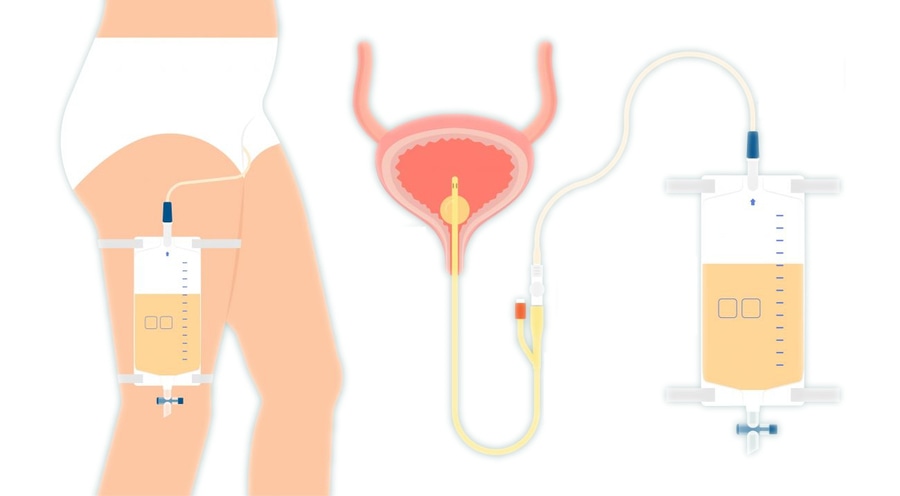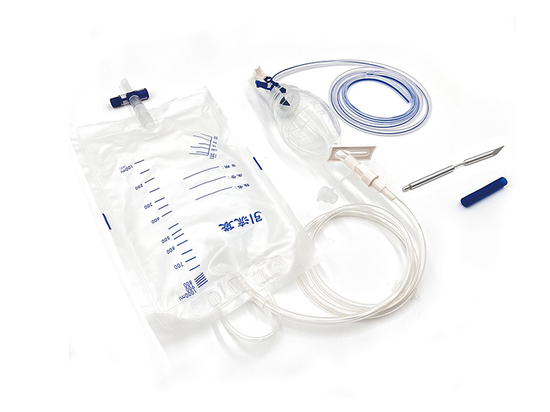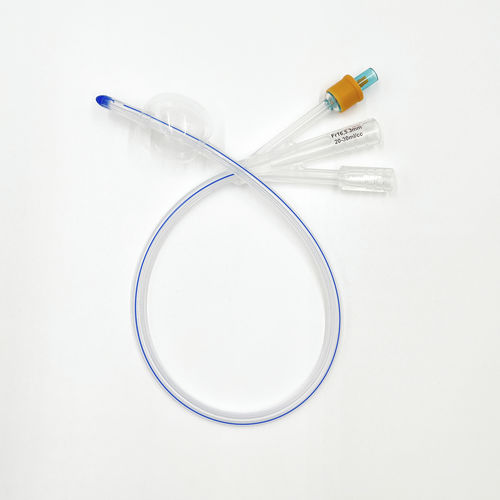
#Industry News
Enter the Department of Urology and learn about urinary catheters
Enter the Department of Urology and learn about urinary catheters
"Doctor, when can I remove my urinary catheter?", "Doctor, I have inserted this urinary catheter, why am I leaking urine?", "Nurse, is my urinary catheter blocked? My lower abdomen is a little bloated?"...
As urology medical staff, we often face some questions from patients about urinary catheter retention at work. For this reason, the editor will take you to learn about the most common catheter in urology today - the urinary catheter, and answer patients' doubts.
The role of the urinary catheter
The urinary catheter is a tube made of soft material. It is inserted into the bladder through the urethra to drain urine. After the urinary catheter is inserted into the bladder, the air bag at the head of the catheter is inflated and fixed to achieve the purpose of retaining the urinary catheter. The drainage tube is connected to the urine bag to collect urine.
Purpose of urinary catheterization:
1. Drain urine for patients with urinary retention to relieve pain.
2. Perform bladder function training for patients with urinary incontinence.
3. Perform bladder chemotherapy for patients with bladder tumors.
4. Empty the bladder for pelvic surgery, so that the bladder remains empty to avoid accidental injury during surgery.
5. Drain urine for patients with urinary incontinence or perineal wounds to keep the perineum clean and dry.
6. Place a catheter after urological surgery to facilitate drainage and flushing, reduce the tension of the surgical incision, and promote the healing of the incision.
7. When rescuing critically ill and shock patients, correctly record the hourly urine volume and measure the urine specific gravity to closely observe the patient's condition changes.
Types of urinary catheters
1. Single-lumen catheter
There is only one hollow tube, which is generally used for temporary catheterization, midstream urine collection, bladder instillation, etc., and is not easy to fix.
2. Double-lumen catheter
There are two cavities, one for water injection and the other for liquid outlet. It is mainly used for temporary catheterization, indwelling catheterization, compression hemostasis after bladder surgery, etc., and is easy to fix.
3. Three-lumen catheter
There are three cavities-water injection cavity, drug injection cavity, and drainage cavity. Mainly used for temporary catheterization, intravesical drug instillation, bladder irrigation, postoperative compression hemostasis of bladder, etc.
Catheter Care
1. Dietary guidance: The diet should be light, easy to digest, fresh and nutritious, such as fish, lean meat, milk, soy products, various vegetables and fruits, etc. Be careful not to eat spicy and irritating foods. Pay attention to drinking more water, more than 2000 mI per day, to achieve the purpose of "internal flushing". It is advisable to drink during the day to avoid increased nocturia and affect sleep.
2. Prevent urinary tract infection: Keep the perineum clean and hygienic, wash the urethral opening with warm water twice a day; for patients with long-term indwelling catheters, come to the hospital in time to replace the catheter according to the prescribed time; keep the drainage unobstructed, the urine collection bag does not touch the ground, and the urine collection bag is always kept below the pubic symphysis; the urine collection bag is urinated in time, and the drainage tube and urine collection bag are not squeezed or twisted to prevent urine reflux.
IV. Special situation treatment
1. "Urine leakage" phenomenon
Answer: During the period of catheterization, some patients will experience urine leakage. They should consult a urologist based on their own condition.
2. "Abdominal distension", "urethral distension and pain", "frequent urination" phenomenon
Answer: These are common discomfort symptoms after catheterization. Maintaining a comfortable environment and a good mental state will help increase the comfort during the catheterization period. If the symptoms are severe and the above measures cannot be relieved, consult a doctor in time.
3. "Catheterization time"
Answer: Catheterization time:
Ureteroscopy/holmium laser lithotripsy: generally 1 to 2 days after surgery
Pyelotomy: about 1 week after surgery
Percutaneous nephrolithotomy: about 1 day after the removal of the nephrostomy tube
Prostatectomy: about 5 days after surgery
Prostatectomy: about 1 week after surgery
Note: The above time is for reference only. The clinical patient's own condition is different. The specific catheterization time needs to be determined by the doctor according to the patient's condition and cannot be generalized!





